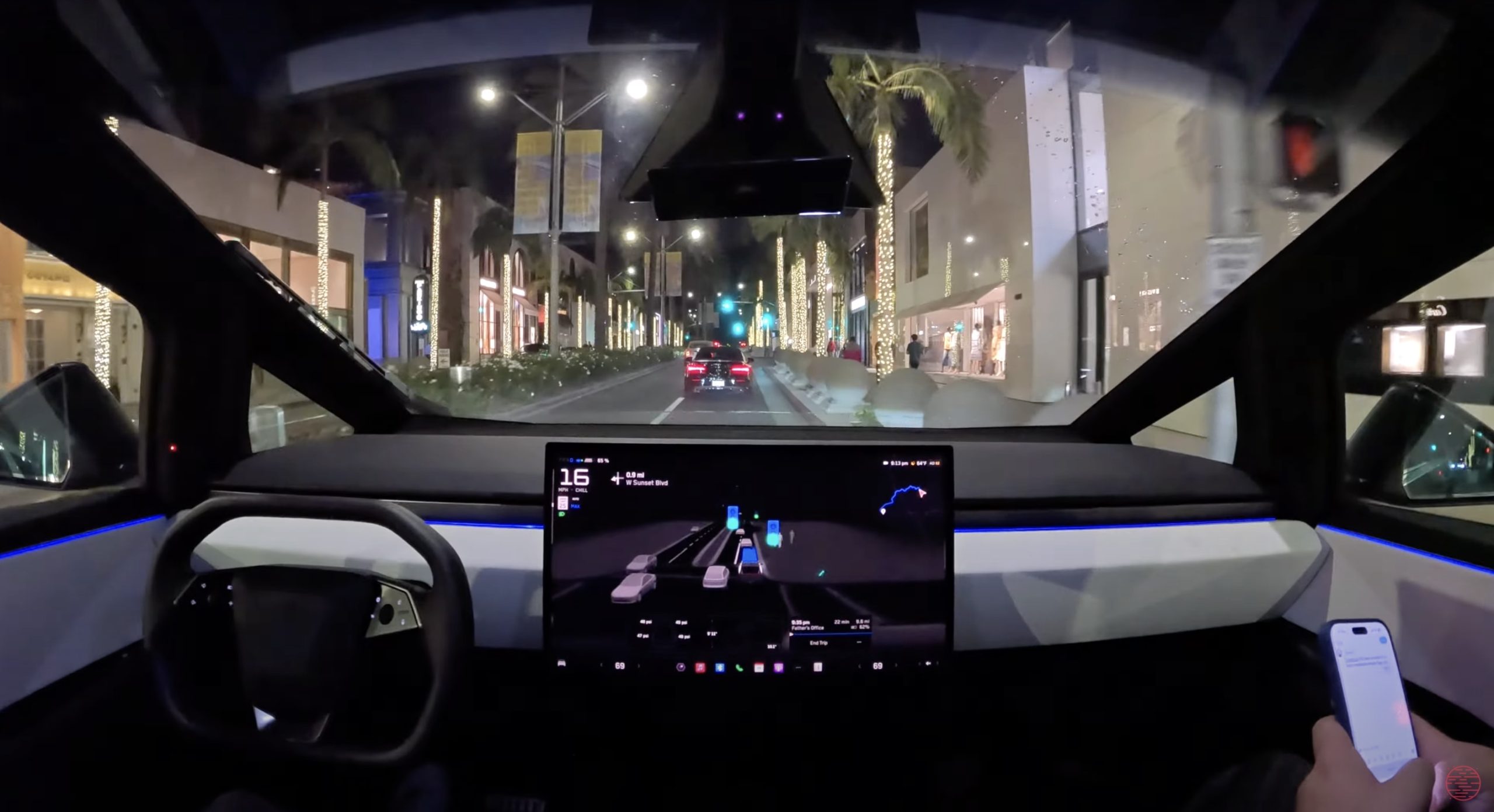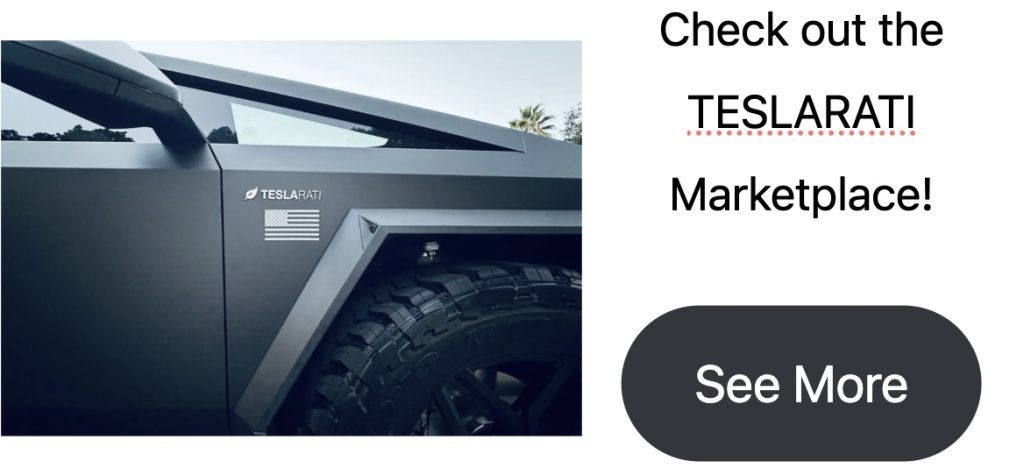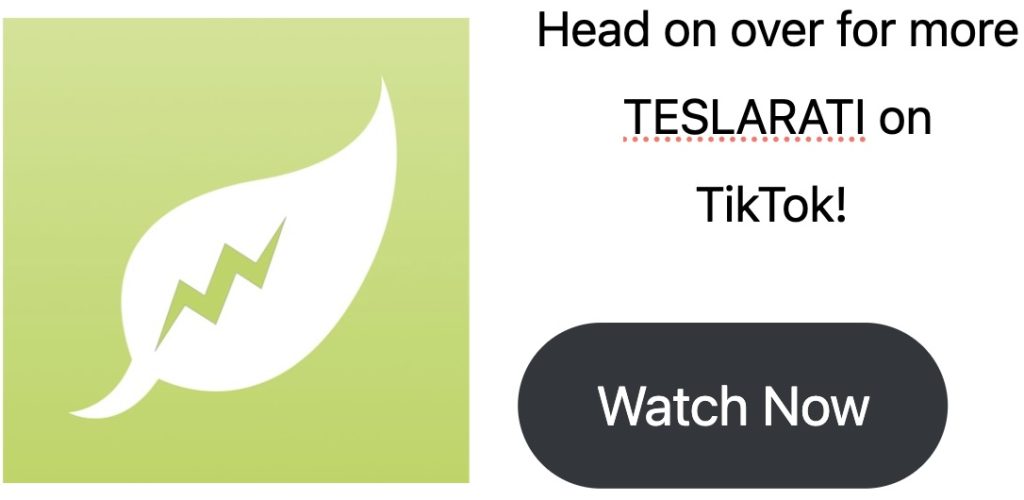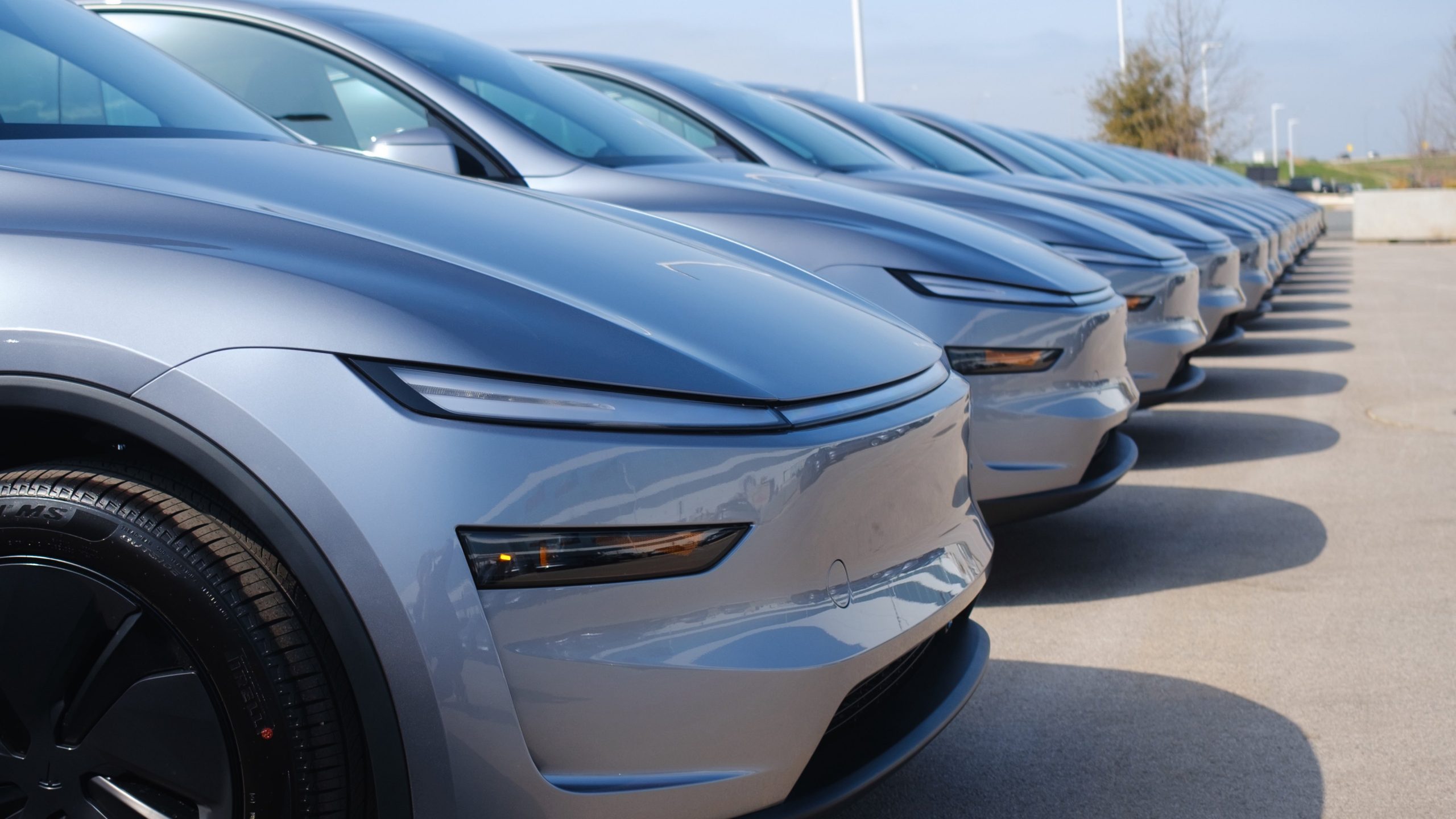

News
Elon Musk discusses Tesla FSD rollout challenges for Europe and China
It is no secret that Tesla’s future relies largely on the company’s ability to achieve true autonomous driving through its Full Self-Driving (FSD) program.
However, while FSD is making huge headways in North America, the program has yet to be rolled out in key markets such as Europe and China.
FSD milestones:
- Tesla has been initiating a continued push to roll out improvements to FSD, with recent v13 releases getting positive reviews from users.
- As hinted at by Tesla’s Q4 2024 Update Letter, FSD users have likely passed 3 billion cumulative miles since the program was launched in October 2020.
- Prior to the Q4 2024 earnings call, Tesla posted a video demonstrating Unsupervised FSD in action at the Fremont Factory.
- Elon Musk also reiterated during the recent earnings call that customers who bought FSD with their HW3 vehicles will get an AI4 hardware upgrade for free.
Europe challenges:
- While FSD is already training very well in North America, Elon Musk noted during the Q4 2024 earnings call that there are challenges to rolling out the system in Europe.
- In Europe, Musk noted that tons of regulations and bureaucracy make it difficult to roll out FSD in the region.
- “Europe is a layer cake of regulations of bureaucracy, that really needs to be addressed. This is like America innovates, Europe regulates. So, guys, there’s too many reps in the field. For example, for us, just to release supervised full self-driving in Europe, even though it works really well, we have to go through a mountain of paperwork with the Netherlands, which is our primary regulatory authority.
- “Then the Netherlands presents this to the EU in, I think, May. And there’s like this big EU country committee. We expect it to be approved at that time. There’s nothing we can do to make that happen sooner.
- “In fact, nobody seems to do — but I guess all the countries would have to somehow vote in some way to have it happen sooner than May. Otherwise, it wouldn’t happen sooner than May. So, when is unsupervised FSD a lot in Europe? I’m like May next year, maybe? I don’t know. Sometimes it’s a 12-month cadence, sometimes it’s six-month cadence,” Musk said.
China challenges:
- It’s not just Europe that is proving challenging. As per Musk, even China has some challenges when it comes to the rollout of FSD.
- “Then China, which is a gigantic market, we do have some challenges because they weren’t — they currently don’t allow us to transfer training video outside of China. And then the US government won’t let us do training in China. So, we’re in a bit of a bind there. It’s like a quandary.
- “So, we’re resolving that by literally looking at videos of streets in China that are available on the internet to understand and then feeding that into our video training so that publicly available video of street signs and traffic rules in China can be used for training and then also putting it in a very accurate simulator. And so, it will train using sim for bus lanes in China. Like bus lanes in China are one of our biggest challenges in making FSD work in China. Their bus lanes are very complicated. And there’s like literally like hours of the day that you’re allowed to be there and not be there.
- “And then if you accidently go in at bus lane at the wrong time, you get an automatic ticket instantly. And so, it was kind of a big deal, bus lanes in China. So, we put that into our simulator train on that, the car has to know what time of day it is, read the sign. Anyway, we’ll get this solved,” Musk said.


Don’t hesitate to contact us with news tips. Just send a message to simon@teslarati.com to give us a heads up.

News
Tesla Model Y configurations get hefty discounts and more in final sales push

Tesla Model Y configurations are getting hefty discounts and more benefits as the company is in the phase of its final sales push for the year.
Tesla is offering up to $1,500 off new Model Y Standard trims that are available in inventory in the United States. Additionally, Tesla is giving up to $2,000 off the Premium trims of the Model Y. There is also one free upgrade included, such as a paint color or interior color, at no additional charge.
NEWS: Tesla is now offering discounts of up to $1,500 off new Model Y Standard vehicles in U.S. inventory. Discounts of up to $2,000 are also being offered on Model Y Premiums.
These discounts are in addition to the one free upgrade you get (such as Diamond Black paint) on… pic.twitter.com/L0RMtjmtK0
— Sawyer Merritt (@SawyerMerritt) December 10, 2025
Tesla is hoping to bolster a relatively strong performance through the first three quarters of the year, with over 1.2 million cars delivered through the first three quarters.
This is about four percent under what the company reported through the same time period last year, as it was about 75,000 vehicles ahead in 2024.
However, Q3 was the company’s best quarterly performance of all time, and it surged because of the loss of the $7,500 EV tax credit, which was eliminated in September. The imminent removal of the credit led to many buyers flocking to Tesla showrooms to take advantage of the discount, which led to a strong quarter for the company.
2024 was the first year in the 2020s when Tesla did not experience a year-over-year delivery growth, as it saw a 1 percent slide from 2023. The previous years saw huge growth, with the biggest coming from 2020 to 2021, when Tesla had an 87 percent delivery growth.
This year, it is expected to be a second consecutive slide, with a drop of potentially 8 percent, if it manages to deliver 1.65 million cars, which is where Grok projects the automaker to end up.
Tesla will likely return to its annual growth rate in the coming years, but the focus is becoming less about delivery figures and more about autonomy, a major contributor to the company’s valuation. As AI continues to become more refined, Tesla will apply these principles to its Full Self-Driving efforts, as well as the Optimus humanoid robot project.
Will Tesla thrive without the EV tax credit? Five reasons why they might
These discounts should help incentivize some buyers to pull the trigger on a vehicle before the year ends. It will also be interesting to see if the adjusted EV tax credit rules, which allowed deliveries to occur after the September 30 cutoff date, along with these discounts, will have a positive impact.
News
Tesla FSD’s newest model is coming, and it sounds like ‘the last big piece of the puzzle’
“There’s a model that’s an order of magnitude larger that will be deployed in January or February 2026.”

Tesla Full Self-Driving’s newest model is coming very soon, and from what it sounds like, it could be “the last big piece of the puzzle,” as CEO Elon Musk said in late November.
During the xAI Hackathon on Tuesday, Musk was available for a Q&A session, where he revealed some details about Robotaxi and Tesla’s plans for removing Robotaxi Safety Monitors, and some information on a future FSD model.
While he said Full Self-Driving’s unsupervised capability is “pretty much solved,” and confirmed it will remove Safety Monitors in the next three weeks, questions about the company’s ability to give this FSD version to current owners came to mind.
Musk said a new FSD model is coming in about a month or two that will be an order-of-magnitude larger and will include more reasoning and reinforcement learning.
He said:
“There’s a model that’s an order of magnitude larger that will be deployed in January or February 2026. We’re gonna add a lot of reasoning and RL (reinforcement learning). To get to serious scale, Tesla will probably need to build a giant chip fab. To have a few hundred gigawatts of AI chips per year, I don’t see that capability coming online fast enough, so we will probably have to build a fab.”
NEWS: Elon Musk says FSD Unsupervised is “pretty much solved at this point” and that @Tesla will be launching Robotaxis with no safety monitors in about 3 weeks in Austin, Texas. He also teased a new FSD model is coming in about 1-2 months.
“We’re just going through validation… https://t.co/Msne72cgMB pic.twitter.com/i3wfKX3Z0r
— Sawyer Merritt (@SawyerMerritt) December 10, 2025
It rings back to late November when Musk said that v14.3 “is where the last big piece of the puzzle finally lands.”
With the advancements made through Full Self-Driving v14 and v14.2, there seems to be a greater confidence in solving self-driving completely. Musk has also personally said that driver monitoring has been more relaxed, and looking at your phone won’t prompt as many alerts in the latest v14.2.1.
This is another indication that Tesla is getting closer to allowing people to take their eyes off the road completely.
Along with the Robotaxi program’s success, there is evidence that Tesla could be close to solving FSD. However, it is not perfect. We’ve had our own complaints with FSD, and although we feel it is the best ADAS on the market, it is not, in its current form, able to perform everything needed on roads.
But it is close.
That’s why there is some legitimate belief that Tesla could be releasing a version capable of no supervision in the coming months.
All we can say is, we’ll see.
Investor's Corner
SpaceX IPO is coming, CEO Elon Musk confirms
However, it appears Musk is ready for SpaceX to go public, as Ars Technica Senior Space Editor Eric Berger wrote an op-ed that indicated he thought SpaceX would go public soon. Musk replied, basically confirming it.

Elon Musk confirmed through a post on X that a SpaceX initial public offering (IPO) is on the way after hinting at it several times earlier this year.
It also comes one day after Bloomberg reported that SpaceX was aiming for a valuation of $1.5 trillion, adding that it wanted to raise $30 billion.
Musk has been transparent for most of the year that he wanted to try to figure out a way to get Tesla shareholders to invest in SpaceX, giving them access to the stock.
He has also recognized the issues of having a public stock, like litigation exposure, quarterly reporting pressures, and other inconveniences.
However, it appears Musk is ready for SpaceX to go public, as Ars Technica Senior Space Editor Eric Berger wrote an op-ed that indicated he thought SpaceX would go public soon.
Musk replied, basically confirming it:
As usual, Eric is accurate
— Elon Musk (@elonmusk) December 10, 2025
Berger believes the IPO would help support the need for $30 billion or more in capital needed to fund AI integration projects, such as space-based data centers and lunar satellite factories. Musk confirmed recently that SpaceX “will be doing” data centers in orbit.
AI appears to be a “key part” of SpaceX getting to Musk, Berger also wrote. When writing about whether or not Optimus is a viable project and product for the company, he says that none of that matters. Musk thinks it is, and that’s all that matters.
It seems like Musk has certainly mulled something this big for a very long time, and the idea of taking SpaceX public is not just likely; it is necessary for the company to get to Mars.
The details of when SpaceX will finally hit that public status are not known. Many of the reports that came out over the past few days indicate it would happen in 2026, so sooner rather than later.
But there are a lot of things on Musk’s plate early next year, especially with Cybercab production, the potential launch of Unsupervised Full Self-Driving, and the Roadster unveiling, all planned for Q1.








